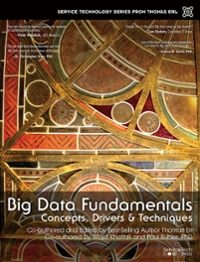Question
Table 4.16 gives a Vigen`ere ciphertext for you to analyze from scratch. It is probably easiest to do so by writing a computer program, but
Table 4.16 gives a Vigen`ere ciphertext for you to analyze from scratch. It is probably easiest to do so by writing a computer program, but you are welcome to try to decrypt it with just paper and pencil.
(a) Make a list of matching trigrams as we did in Table 4.3. Use the Kasiski test on matching trigrams to find the likely key length.
Trigram - Appears at places - Difference avl - 117 and 258 - 141 = 3 47 bjo - 86 and 121 - 35 = 5 7 dlr - 4 and 25 - 21 = 3 7 gdl - 3 and 24 - 16 = 24 Table 4.3: Repeated trigrams in the ciphertext given
(b) Make a table of indices of coincidence for various key lengths, as we did in Table 4.4. Use your results to guess the probable key length.
Key Average Individual Indices Length Index of Coincidence 4 0.038 0.034, 0.042, 0.039, 0.035 5 0.037 0.038, 0.039, 0.043, 0.027, 0.036 6 0.036 0.038, 0.038, 0.039, 0.038, 0.032, 0.033 7 0.062 0.062, 0.057, 0.065, 0.059, 0.060, 0.064, 0.064 8 0.038 0.037, 0.029, 0.038, 0.030, 0.034, 0.057, 0.040, 0.039 9 0.037 0.032, 0.036, 0.028, 0.030, 0.026, 0.032, 0.045, 0.047, 0.056 Table 4.4: Indices of coincidence of Table 4.2 for various key lengths
(c) Using the probable key length from (a) or (b), make a table of mutual indices of coincidence between rotated blocks, as we did in Table 4.5. Pick the largest indices from your table and use them to guess the relative rotations of the blocks, as we did in Table 4.6.
(d) Use your results from (c) to guess a rotated version of the keyword, and then try the different rotations as we did in Table 4.7 to find the correct keyword and decrypt the text.
mgodt beida psgls akowu hxukc iawlr csoyh prtrt udrqh cengx uuqtu habxw dgkie ktsnp sekld zlvnh wefss glzrn peaoy lbyig uaafv eqgjo ewabz saawl rzjpv feyky gylwu btlyd kroec bpfvt psgki puxfb uxfuq cvymy okagl sactt uwlrx psgiy ytpsf rjfuw igxhr oyazd rakce dxeyr pdobr buehr uwcue ekfic zehrq ijezr xsyor tcylf egcy Table 4.16: A Vigen`ere ciphertext for Exercise 4.18
Step by Step Solution
There are 3 Steps involved in it
Step: 1

Get Instant Access to Expert-Tailored Solutions
See step-by-step solutions with expert insights and AI powered tools for academic success
Step: 2

Step: 3

Ace Your Homework with AI
Get the answers you need in no time with our AI-driven, step-by-step assistance
Get Started


